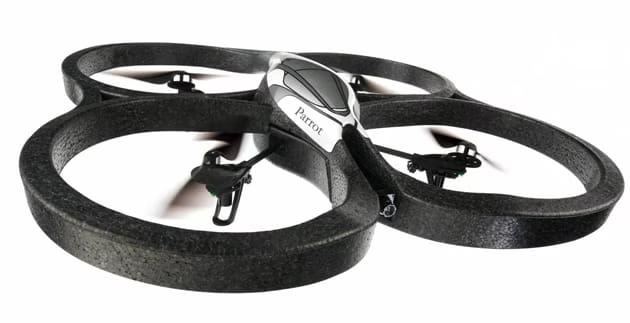A Drone-based Delivery System

I read an article > recently talking about consumer drones. It was a good piece, but at the very end it mentioned something I found fascinating: drones being used as a delivery system.
I wrote recently > about how consumer drones will affect personal security, but this delivery angle set me thinking as well.
The concept
The idea this gave me is having an entire delivery grid for something like a city, whereby the airspace from, say, 100-400 feet would be designated for delivery drones.
The advantage is obvious: you could travel extremely quickly in (mostly) straight lines rather than through traffic and via circuitious routes. Some items (large, heavy, expensive, etc.) would still need to go on the ground, but many would well-suited for this:
Food
Cheap items
Light items
Items that are time-dependent
Software
What I found fascinating was the software that would be used for this. It wouldn’t be some drone jockey at Dominos flying this thing to the customer. It will be software, with a GPS location for the drop off, combined with authentication of the receiver and an Uber-like payment system.
The drone flies itself to the designated pick-up zone
All delivery drones speak an air traffic control protocol that’s managed through a centralized system. The drones register in and report their location in the air at all times.
Routes are planned by the system, which has most going in mostly straight lines, but avoiding collisions and planning for failures (safe crashes, etc.)
Payment is made like with Uber, i.e. it’s already pre-authorized when the drone takes off, and there are specific rules for cancellation, etc.
The drone will authenticate the recipient via a bluetooth-based authentication protocol to ensure that the right person gets the cargo.
Friction points
There are few major obstacles to this happening, and they simply have to be weighed against the usefulness of the solution to determine whether it’ll materialize.
The danger of crashes. If there are a lot of these, some of them will fall out of the sky due to malfunctions. They can hit people, they can damage property, etc. Solution: insurance.
People attacking them for fun/mischeif. It seems like it’d be rather fun for kids to fly their own drones and intercepting them, or shooting them out of the sky, or jamming their control radios. Solution: disincentivized through punishment.
Theft. Many will anticipate cargo in various ways and attempt to steal what’s being carried. Solution: constant camera broadcast, carrying only low-value items, prosecution.
Noise and visual pollution. It seems many are likely to protest the buzz and visual clutter of dozens of drones flying overhead. Solution: people will get used to it, they can be made to fly quietly, and it’s not as much of an issue at night.
Other considerations
Another major factor (the biggest, really) will be cost. Cost of buying and replacing the drones, maintaining a license to use the drones, the cost of accident insurance, and such–against the cost-savings from shorter delivery times, saving on fuel, etc.
The sci-fi geek, role-player in me sees all sorts of strange scenarios from this:
Assassination drones disguised as delivery drones
New universal terms for needing to take cover from a drone (falling or otherwise)
Kids setting off an EMP blast and dropping 78 drones on downtown
People selling the data they gather on the drones
People running advertisements in the sky via the drones
The drone owners being subsidized by network carriers by serving as repeaters
{ a million others }
Anyway, that’s all for now. Anxious to hear any expansion of the idea, why it’s stupid, etc.